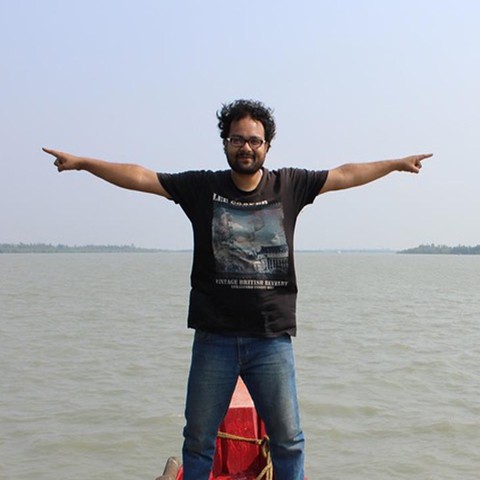
Can you say a few words about yourself?
I was born and brought up in a small town in Midnapore in the eastern part of India. It is a small historical town with a beautiful river, forest, laterite soil and rich architecture. I completed my school there from Midnapore Collegiate School. I then went to Kolkata, the nearby metro city for higher studies. I chose life science for my masters and joined Bose Institute. During my masters, I came in close contact with a group of students from different backgrounds and there my interest in climate change and air pollution grew. I spent 5 years in the eastern Himalayan high altitude station Darjeeling during my PhD and travelled across the pristine locations in India for sampling. After PhD and before joining EPFL, I spent two years working for a NGO on climate change adoption in three countries (India, Bangladesh and Bhutan). I got the feeling that the knowledge I acquired during my PhD and post-PhD was being transferred to the community.
Did you choose your profession or did it choose you?
I think it’s a combination of both. After my school, with limited information in my hand, I chose the subject I liked most. It’s actually the training during PhD which helped me to identify my goals. If you see the topics that I chose to study till now it might seem to be quite unorthodox (Zoology-Life Science-Environmental Science-Climate Change Adaptation-Air quality Management). It’s simply because I had to select the best available options initially, and then during and after PhD, I went for options that I liked.
What attracted you to join LAPI?
I was highly influenced by the multidisciplinary research programs of LAPI. Chance of collaboration and discussion with people from different specializations has always attracted me. In the past too, I had collaborated with plant biologists, developmental professionals, rural economists, marine biologists, air quality professionals and life cycle analysts. The pro-collaborative attitude at LAPI attracted me very much.
Can you speak about the projects you are currently working on and other ones in the past?
I am currently working on an implementation oriented project (CAP – Clean Air Project), with the goals of improving data measurement and enhancing the capacity of the stakeholders for four Indian cities. We will be looking for answers to the questions like: how to select air quality monitoring sites in highly heterogeneous air sheds in India cities? What are the feasible methods of source segregation available? How to design mitigation and adaptation of implementation pilots for air quality management? During my PhD, I majorly worked on aerosol-precipitation interactions, biosphere-atmosphere exchange, long-term air quality measurement etc. Post PhD I have worked on climate change adaptation projects, climate smart agriculture and aquaculture projects, WASH, mitigation of agro-residue burning and conservation based livelihood projects and ecosystem pricing under the aegis of various groups like International Partnership for the Satoyama Initiative (IPSI), Deutsche Gesellschaft für Internationale Zusammenarbeit (GIZ), IUCN, Asia Pacific Network (APN), American Consulate (India), PricewaterhouseCoopers etc.
What have been some of your biggest successes?
We were working in Arunachal Pradesh, in the north eastern part of India where the population density is lower than 1 person per square kilometer. It has beautiful valleys, huge black neck Cranes and is in the midst of the eastern Himalaya. We were searching for a local landrace of rice, which has such a beautiful aroma, that you can simply eat it alone. It takes weeks to understand that the existence of the rice is kind of mythical. We went through most of the villages and were told that they do not cultivate that rice anymore. We were very frustrated. Then on the last day, we asked some of the old people, if they had any information regarding any villages. We got a lead and went to the place, but the village seemed to be abandoned. I took a walk inside the village while others waited outside of the village. After roaming around for a while, I could smell something. The fragrance attracted me like a moth to a flame. Around 100 meters away, inside a stone paved house, an old man was cooking rice. When he saw me, he offered me some.
You split your time between teaching and research. How do you view these two roles?
Explaining complicated things in simplified versions is a thing that I love to do. So, while teaching, I actually learn something every day. I would love to interact with younger minds as it might lead to a future collaboration. What do you enjoy to do, outside of science and research? Read and write about climate change in my native language (https://www.sobujprithibi.in/). Currently I am translating an IPCC assessment report in my native language. Besides that, I am kind of a huge fan of 80’s Glam Rock and DC comics.
Where is the most interesting place you’ve been?
Darjeeling. I mean you can’t compete with the view of the entire mountain range including Kanchendzonga and Everest from your lab, from your home and that too on a full moon night. You will find beautiful people around who are honest and simple, the cab drivers who play AC/DC, the rhododendron filled path, the smell of hill spices, live bands and the sleeping Buddha.
A free thought for the end?
Dream on, dream on, dream until the dream comes true.